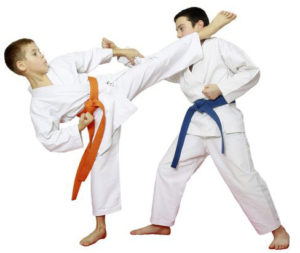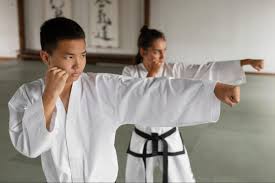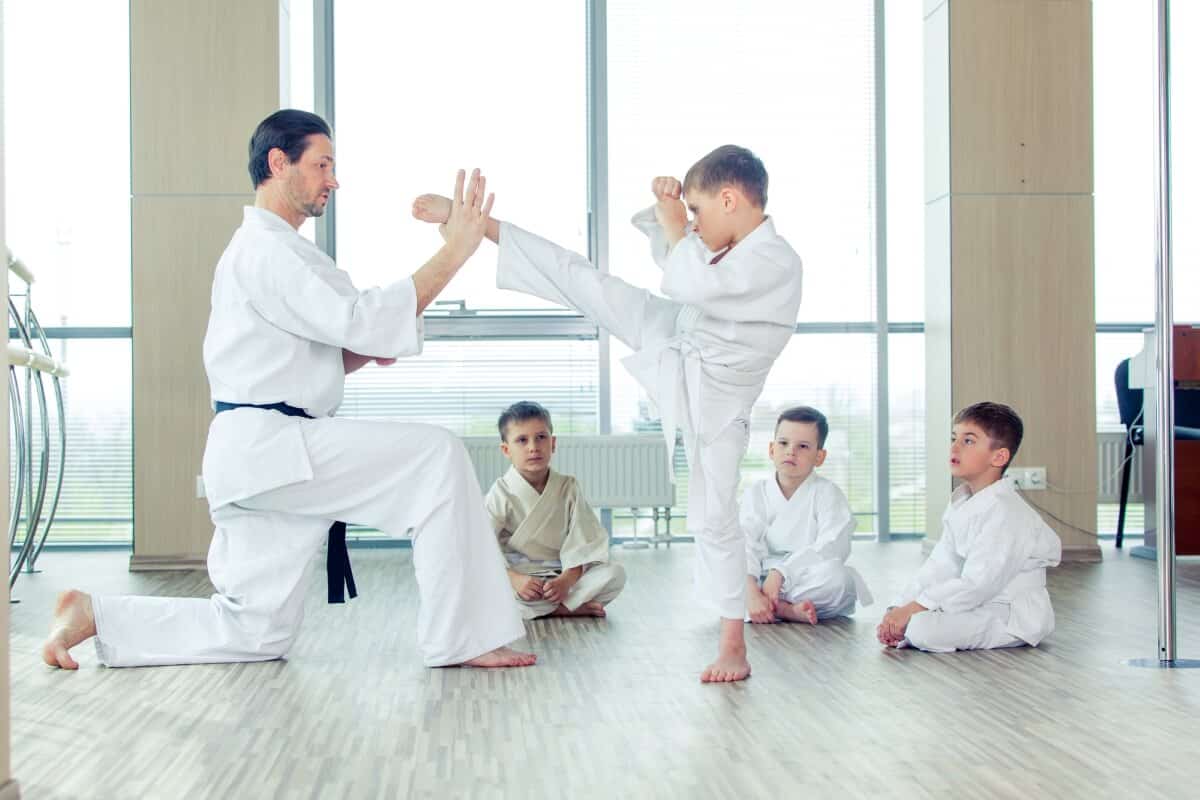 Karate is a martial art that originated in
Okinawa with its history being able to be traced
back to the 1300s. Brought to mainland Japan in
the early 20th century, it has become one of the
world’s most popular martial arts and has
developed several different styles including
Shotokan, Goju-Ryu, Kyokushinkai and Wado-Ryu.
Karate is a martial art that originated in
Okinawa with its history being able to be traced
back to the 1300s. Brought to mainland Japan in
the early 20th century, it has become one of the
world’s most popular martial arts and has
developed several different styles including
Shotokan, Goju-Ryu, Kyokushinkai and Wado-Ryu.
Karate, unlike Japanese Judo is primarily a striking art and involves the use of punches, kicks, knee and elbow strikes and various other striking techniques. Some forms of karate may also include a small amount of throws, joint locks and grappling, though it is as an exciting striking art that Karate is known.
Karate is practiced all around the world by people young and old. Some famous people to have achieved Karate black belts include James Caan, Sean Connery, Forest Whitaker, Bear Grylls and Elvis Presley. Practitioners of Karate are known as Karateka and for those that want to compete, Karate has a big sporting element known as Kumite, with the World Karate Federation being the world’s largest organisation overseeing the sporting side of the martial art. The WKF hosts competitions across the world and is the only Karate governing body recognised by the International Olympic Committee.
Object of Karate
The object of Karate is to defeat your opponent by utilising punches, kicks and throws to score points. At the end of a Karate kumite, the competitor with the most points is declared the winner (or before the end if they reach and eight point lead over their opponent). As well as being a combative physical activity, Karate is highly skilled and tactical, and all competitors are required to have a high level of skill, experience, speed and dexterity to be successful in Karate competition.
Players & Equipment
Competitors are placed into categories according to their weight and maybe their age in the case of junior competitions. All competitors in Karate kumite competitions are required to wear a traditional Karate suit known as a gi and this should be plain and without stripes or embroidery. Instead of wearing the belt colour that signifies their rank, one contestant wears a red belt and the other a blue belt to help distinguish them. Other prescribed pieces of equipment are:
- A gum shield
- Body protection (and extra chest protection for females)
- Shin pads
- Foot protectors
Groin guards can be worn but are not mandatory.
Scoring
Scoring in Karate competitions is relatively simple. Scoring is limited to the following areas of the opponent’s body:
- Head
- Face
- Neck
- Chest
- Abdomen
- Side
- Back
A score is awarded when one fighter performs a technique that conforms to the following criteria and the blow lands on a relevant scoring area of their opponent’s body:
- Good form
- Vigorous application
- Good timing
- Accurate distance
- Awareness
- Sporting attitude
Fighters can score one, two or three points for attacking techniques:
Ippon (three points) is awarded for:
- A jodan kick (kick to upper level)
- Any scoring technique performed on a fallen or thrown opponent
Waza-ari (two points) is awarded for:
- Chudan (mid level) kicks
Yuko (one point) is awarded for:
- Chudan or Jodan Tsuki (mid or upper level punch)
- Jodan or Chudan Uchi (mid or upper level punch).
Winning the Match
A Karate match can be won in a number of ways:
- By having more points than your opponent at the end of the fight.
- By extending a lead of eight points immediately ends the match
- If you render your opponent unable to carry on
- If your opponent is disqualified.
If the amount of points are equal at the end, then the referee and the three judges consult and decide a winner between them.
Rules of Karate
- Karate Kumite matches take place on a matted square of 8m x 8m with an additional 1m on all sides that is called the safety area.
- Once the referee and judges have taken their places, competitors should exchange bows.
- The fight starts when the referee shouts “SHOBU HAJIME!”
- Both fighters should attempt scoring techniques (punches, kicks and throws) on their opponent. These are classified as Yuko, Waza-ari and Ippon and are one, two and three points respectively.
- If the referee deems a scoring technique may have been used, the referee shouts YAME and the contestants, judges and referee all resume their original positions.
- The judges will then indicate their opinion by means of a signal and if a score is to be awarded, the referee identifies the contents and the area that they attacked and then awards them the relevant socire (Yuko, Waza-ari or Ippon) and then restarts the bout by shouting “TSUZUKETE HAJIME!”
- If one competitor establishes a clear lead of eight points during a match, then the referee calls a halt to the bout and declares them the winner.
- If no competitor establishes a clear lead of eight points during the fight, then the fighter who has the most points is declared the winner.
- In the event of the points being level, the referee and the judges will decide who is the winner of the bout.
- Fights can end earlier if one competitor is knocked down and is not in a position to carry on or if one fighter is disqualified.












